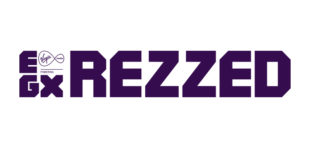Consumer retail analyst at Kantar Worldpanel Jules Williams reviews the growth of digital gaming, who’s buying into it and the direction of the digital pound…
Digital game downloads have – in theory at least – been available since the 1980s. But it’s only in the past few years that advances in internet speeds and hardware have made it a practical option for gamers. In the past year, 28 per cent of gamers downloaded digital content, and there has been an increase in spend of 21 per cent. Gamers are trying out or converting to digital at an increasing rate, yet overall gamer numbers are static – these new digital buyers are existing players. What is driving them to try digital, and what is the forecast for the future?
It’s only natural that gaming should make the move to digital, following the success of the music and publishing industries. Unsurprisingly, there is less resistance to digital gaming than there was in those instances, where there was a perceived loss of quality in the digital product. People are more confident in using new technology and appreciate the convenience of a digital purchase, while broadband speeds have reached a level where it is possible to download a game in minutes.
This has broadened digital’s appeal. As people become more tech-savvy, the mainstream gamer profile widens – some 24 per cent of new digital shoppers are over 45, compared to 11 per cent of existing digital users, while women account for 31 per cent of new buyers against only 13 per cent of existing digital gamers.
"PC users are moving to digital faster that those
using consoles. With computers by far the most
established digital platform, the number of
gamers jumped from 43 to 65 per cent between
2012 and 2013, an increase of 69,000 shoppers.
This is in comparison with PlayStation and Xbox,
where the number of video game users buying
digital rose from 18 to 24 per cent."
PC users have long been the forerunners of digital, and this year they’ve continued to grow strongly. Notably, PC users are moving to digital faster that those using consoles. With computers by far the most established digital platform, the number of gamers jumped from 43 to 65 per cent between 2012 and 2013, an increase of 69,000 shoppers. This is in comparison with PlayStation and Xbox, where the number of video game users buying digital rose from 18 to 24 per cent.
One of the major advantages for the growth of the digital gaming market on PCs is the online retail platform, Steam, which accounts for 61 per cent of all digital PC purchases. Part of its success is that it offers its millions of users smaller indie titles, keeping them engaged between the big blockbusters. These games are much more common on PCs – new consoles which attract fresh gamers on big name releases miss out on users who aren’t as interested in triple-A titles.
Platforms like Steam also attract users through flash sales, which encourage digital purchases of slightly older games, whose physical copies stay nearer their original price. With no limitation on space, digital platforms can sell as many copies of as many different titles as they like, while physical retailers stick to the latest, pricier games. This is an additional draw for gamers who like a bit of variety or get bored faster.
Another main driver of growth is that new digital gamers aren’t just testing out the medium – they tend to buy digital several times a year, accounting for a fifth of their gaming spend. If you try it, there’s a good chance you’ll like it, as new digital gamers buy twice a year, on average spending 29.23.
Some of these players are attracted by triple-A releases. Every year around the time they go on sale we see the percentage of gamers trying digital jump by two percentage points. From September to November 2012 it went from 18 per cent to 20 per cent for Xbox 360 and PS3 users, and from September to November 2013 this figure rose again to 22 per cent.
What is remarkable is that just three big names make up a fifth of digital spend: Call of Duty: Ghosts; Skyrim and Minecraft. These games have a particular appeal for new digital users as they are available across a wide number of online platforms and feature strong downloadable content. Minecraft is an indie darling which has broken through to mainstream culture, giving gamers another excuse to try digital if they haven’t already.
Skyrim’s success in Xbox and PlayStation sales will have helped to convert new digital shoppers, but its real pulling power comes from its downloadable content. Almost half of new digital spend on the game, some 44 per cent, goes on in-game purchases, while Call of Duty: Ghosts manage to bring in a quarter of spend this way. If more games can produce such enticing in-game digital content we could see a greater rise in conversion to digital.
"What is remarkable is that just three big names make
up a fifth of digital spend: Call of Duty: Ghosts; Skyrim
and Minecraft. These games have a particular appeal
for new digital users as they are available across a
wide number of online platforms and feature strong
downloadable content. Minecraft is an indie darling
which has broken through to mainstream culture,
giving gamers another excuse to try digital if
theyhaven’t already."
The PlayStation 4 and Xbox One are getting better at encouraging their user base to buy digital, but there’s no sign that the new interfaces are drawing gamers to digital faster. This is likely to be because many early adopters of these consoles have already tried digital, being more tech-savvy and eager to test the new technology to its full capabilities. One third of Generation Four shoppers had bought digital on Generation Three. Overall 20 per cent of Xbox 360 and PS3 shoppers bought digital.
But this should change in the future. Digital gaming’s popularity among those who’ve tried it should act as a catalyst for attracting new users. As next-gen gaming becomes more mainstream, more gamers who haven’t yet tried digital will be drawn in, and if they continue to follow current trends they’re likely to stick with it.
But what we’ve already seen is that it’s not just the initial digital purchase of a game that draws people in. Quality DLC is of equal importance, and we expect to see it rise in prevalence in the coming years. If developers and retailers keep this in mind, then we can expect some positive news about digital gaming in the future.

 MCV/DEVELOP News, events, research and jobs from the games industry
MCV/DEVELOP News, events, research and jobs from the games industry



